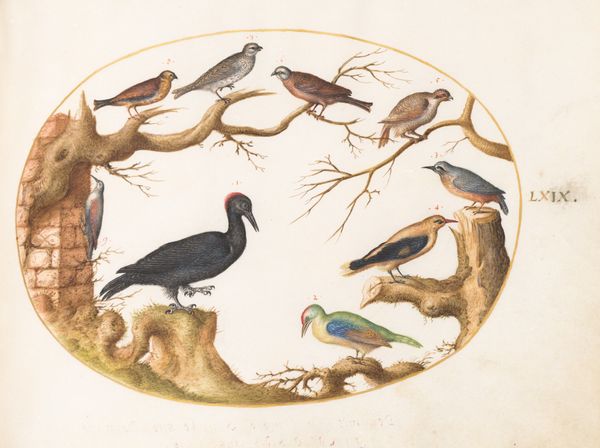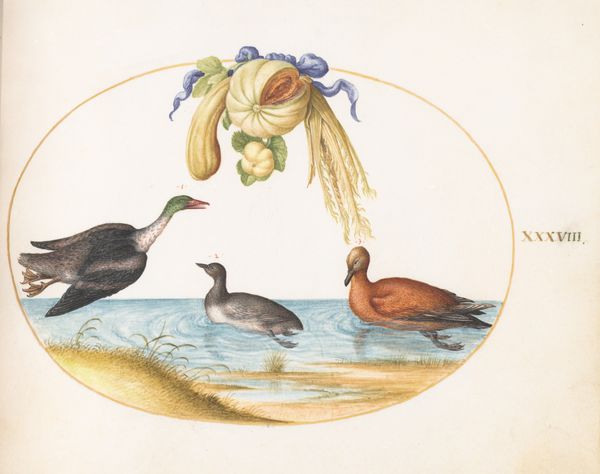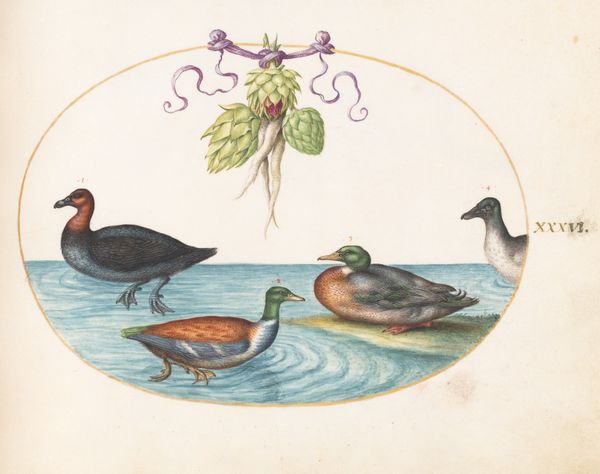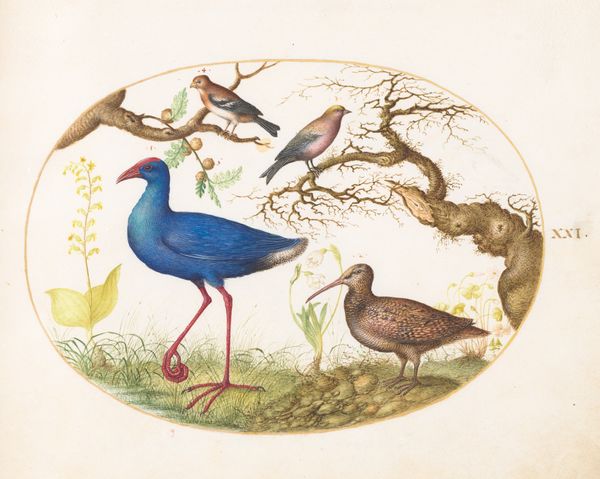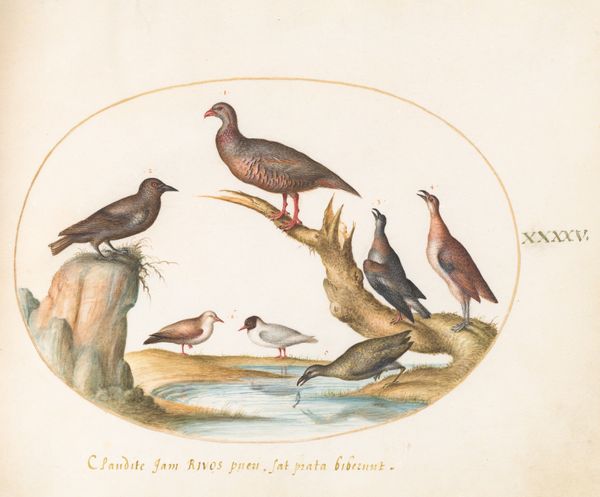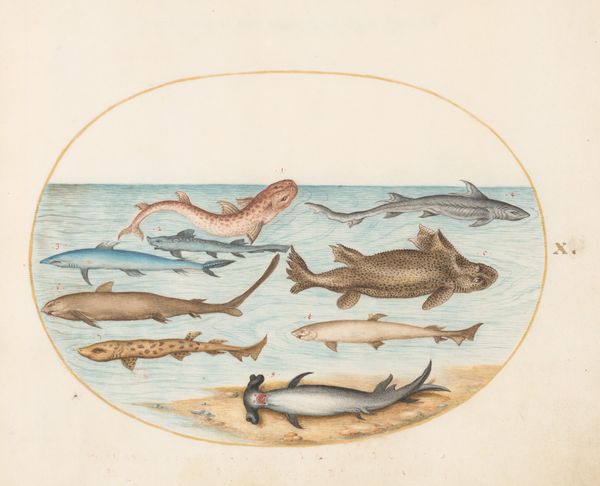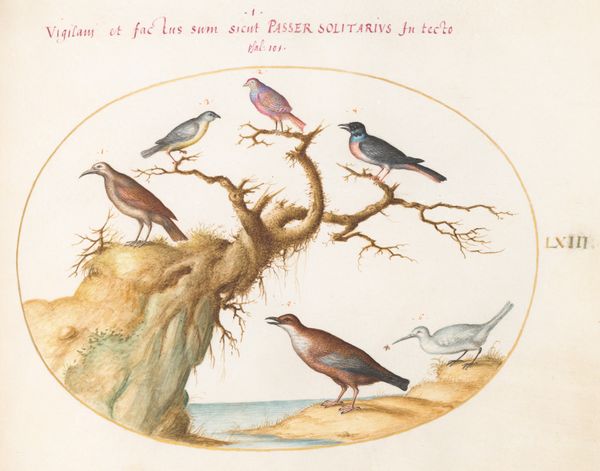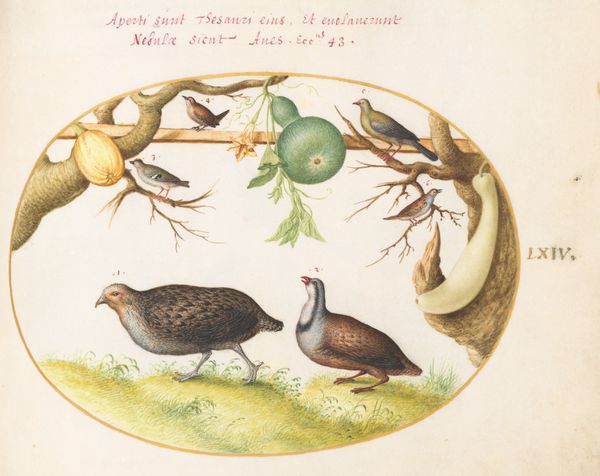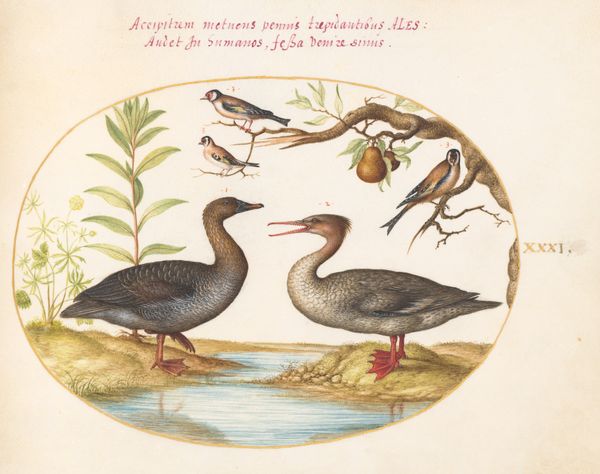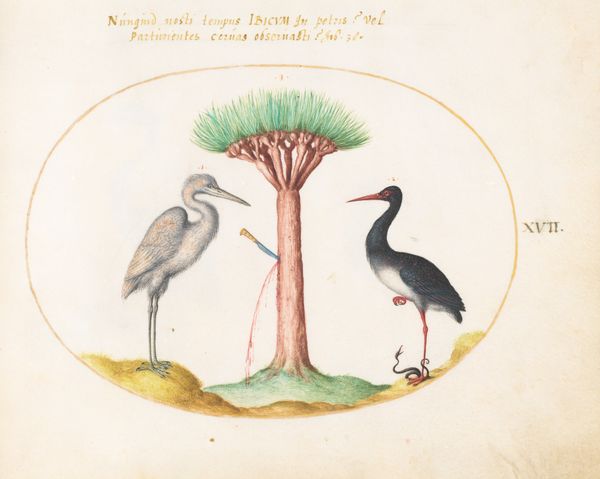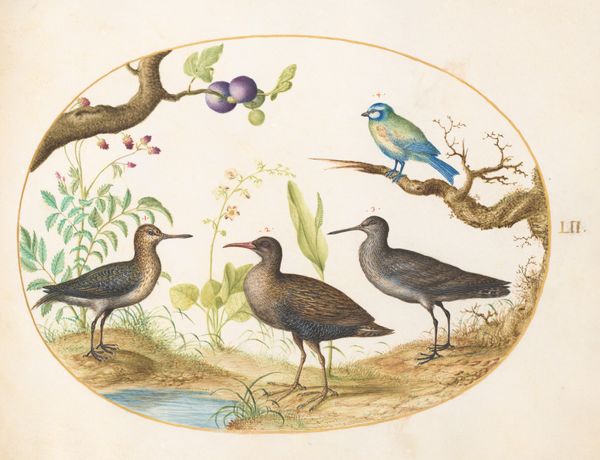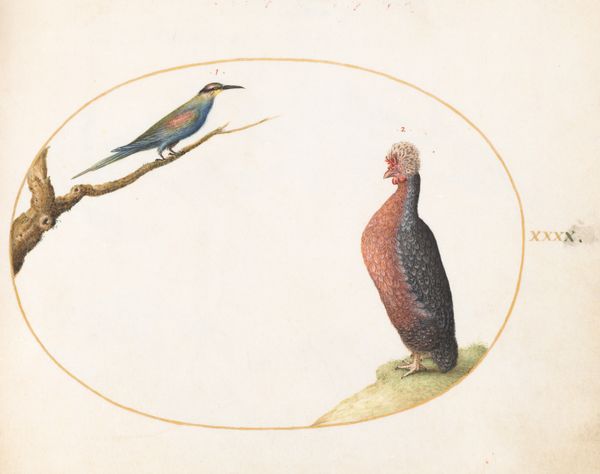
Plate 28: Barnacle Goose with Shrikes and Other Birds c. 1575 - 1580
0:00
0:00
drawing, watercolor
#
portrait
#
drawing
#
landscape
#
watercolor
#
coloured pencil
#
watercolour illustration
#
northern-renaissance
Dimensions: page size (approximate): 14.3 x 18.4 cm (5 5/8 x 7 1/4 in.)
Copyright: National Gallery of Art: CC0 1.0
Joris Hoefnagel created this watercolor and gouache on paper, "Barnacle Goose with Shrikes and Other Birds," some time in the late 16th century. It’s an intriguing example of how natural history was understood in Northern Europe at that time. Hoefnagel's image blends observation with folklore. The barnacle goose was believed to originate from barnacles, hence the depiction of barnacles attached to a piece of driftwood. This wasn't simply a matter of ignorance; it reflected a specific worldview. Natural phenomena were often interpreted through religious and symbolic lenses. Made in a period when the natural world was both a source of wonder and a subject of scientific inquiry, the image reflects the rise of the encyclopedic impulse and the development of natural history as a discipline. To truly understand this work, we need to delve into the illustrated books of the period, the scientific treatises, and the travelogues that shaped early modern Europeans' understanding of the world around them. The meaning of art is always contingent on its social and institutional context.
Comments
No comments
Be the first to comment and join the conversation on the ultimate creative platform.
